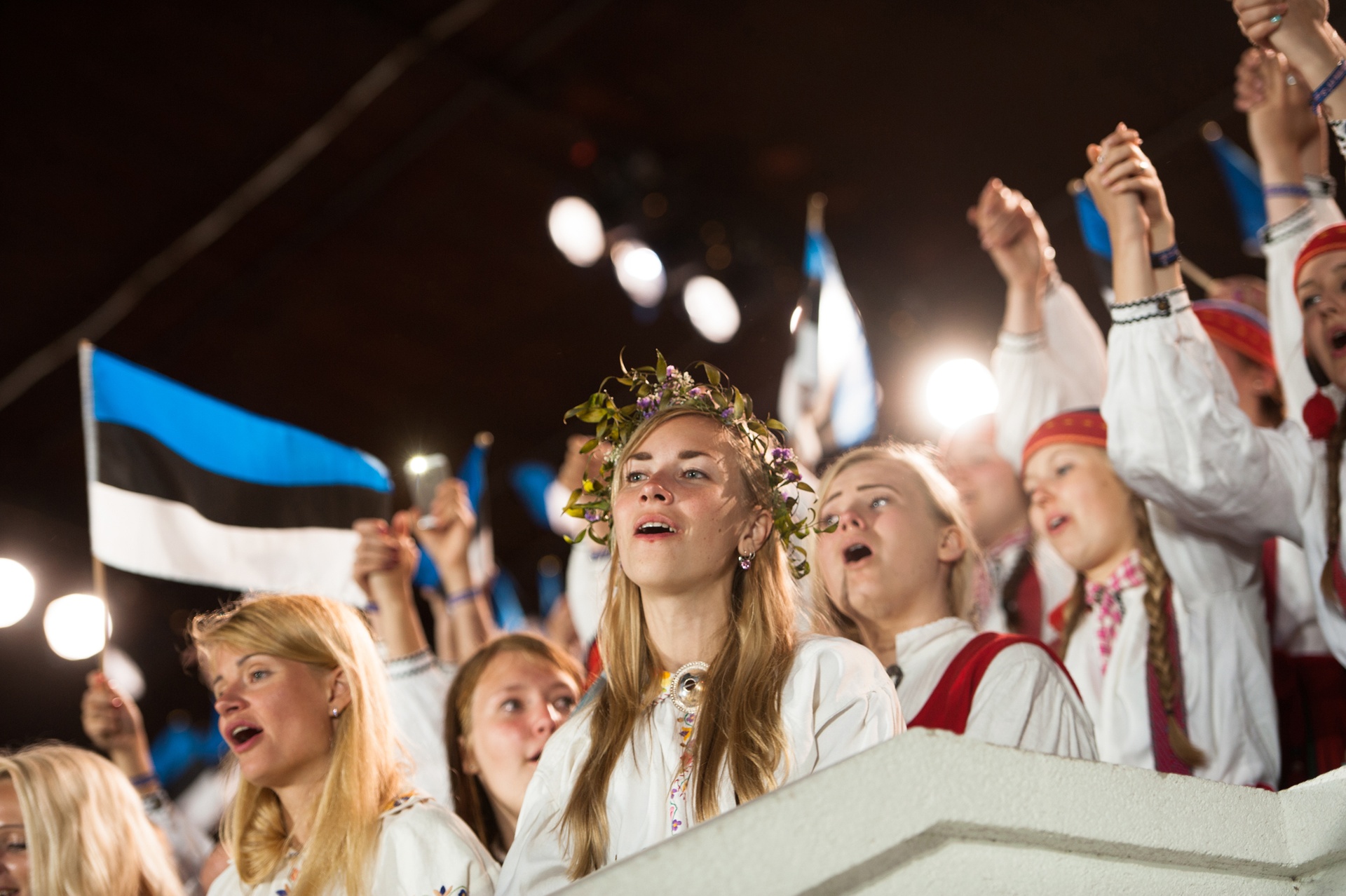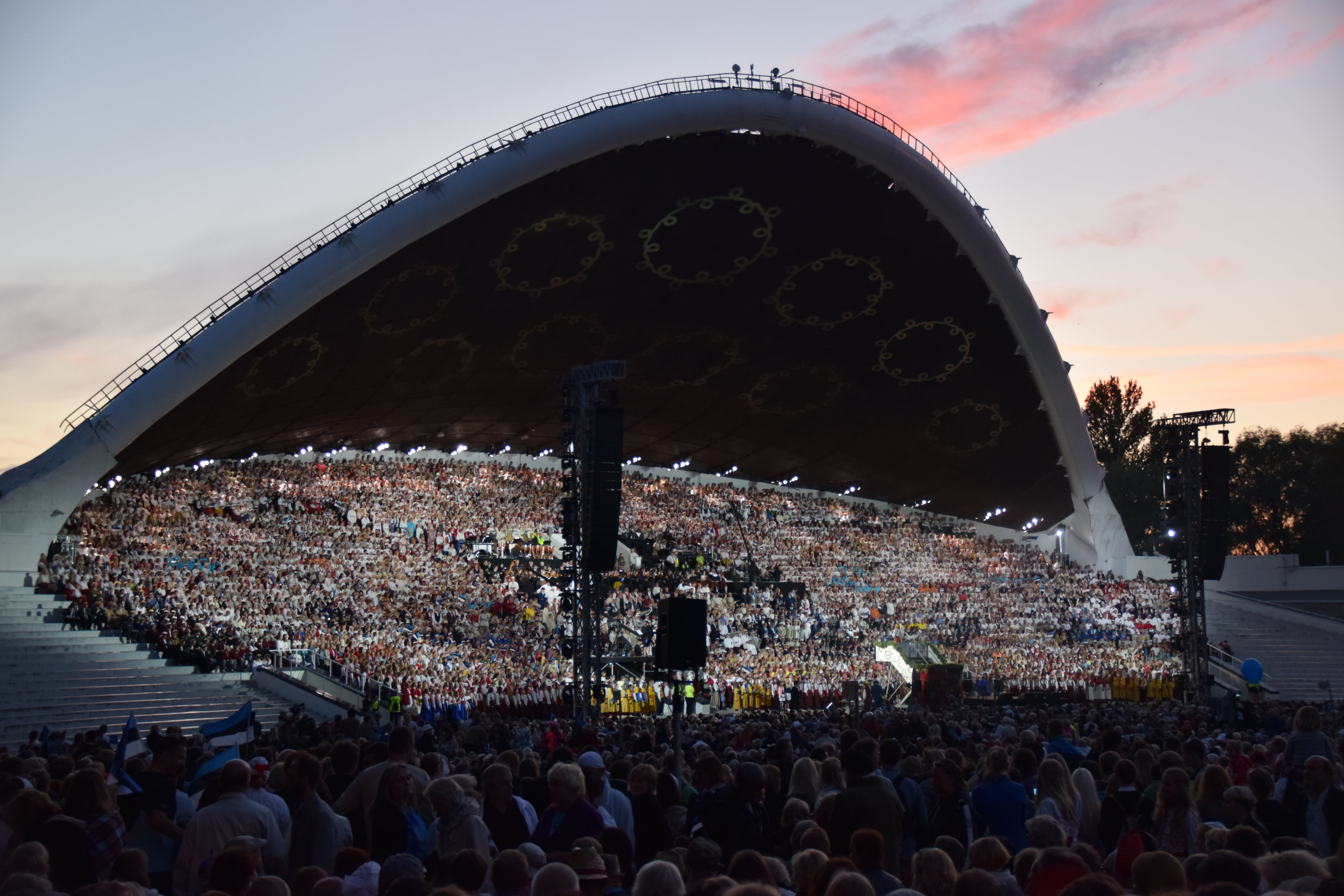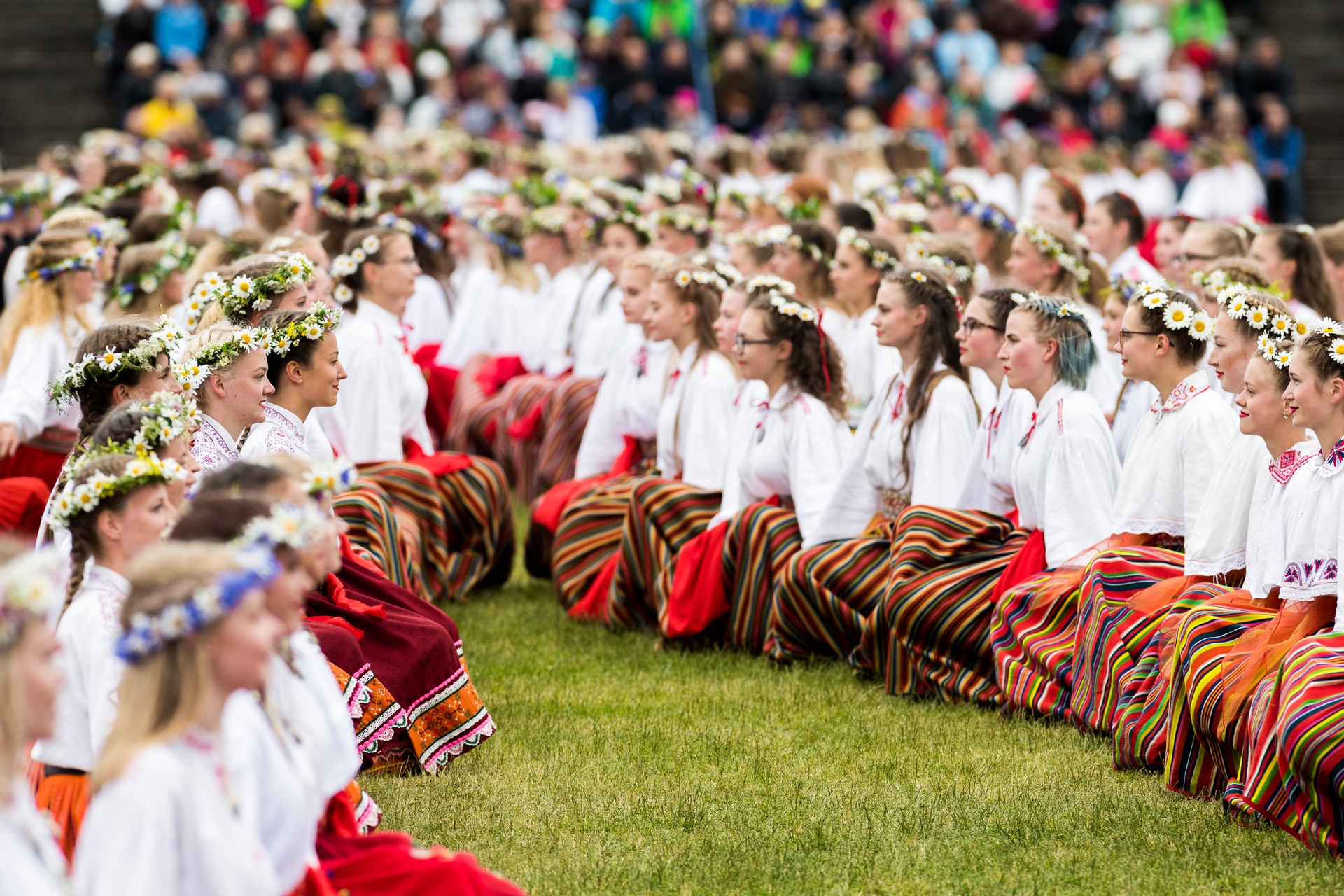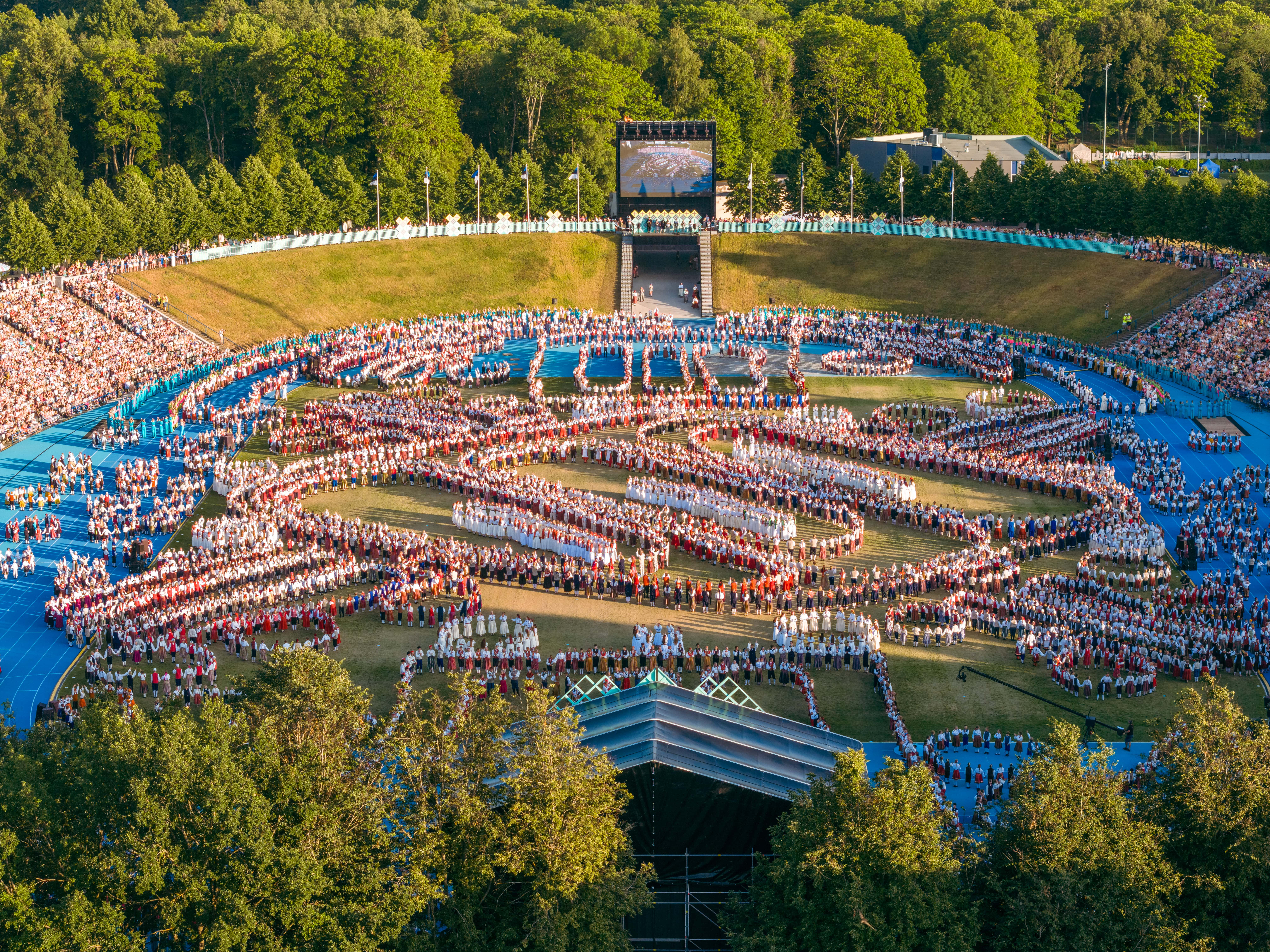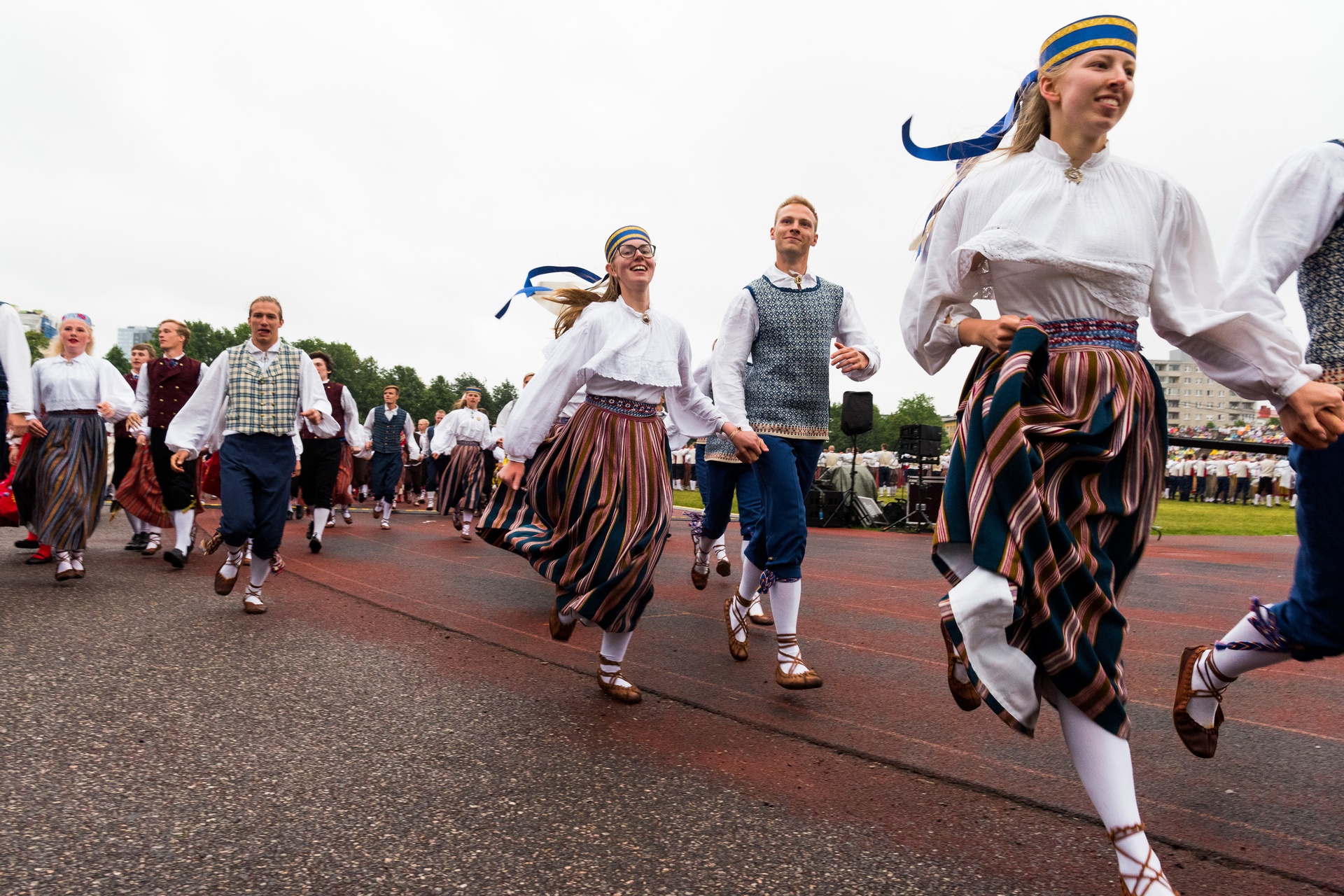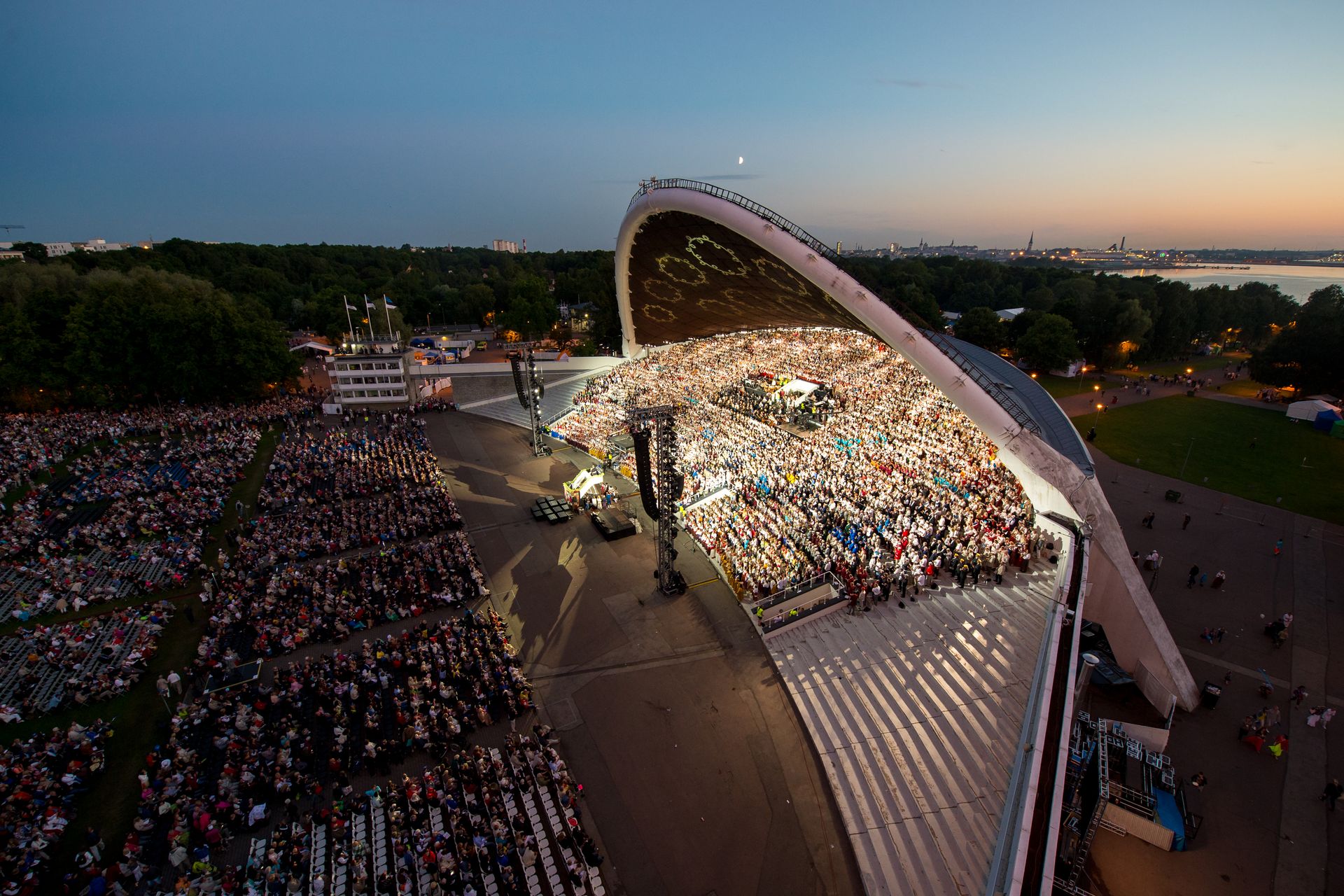
Experience Estonia's Song & Dance Celebration
First held in 1869, this massive cultural event has become an important expression of Estonian identity.
If you ask an Estonian about Estonia, you will likely hear about the Song and Dance Celebration.
It is a way of being, a way to better understand ourselves and to express the values that we consider important as a nation — love for our country, language, culture, and customs.
The Song Celebration has grown steadily since 1869, when the first festival was held in Tartu under Johann Voldemar Jannsen's leadership. The first festival included only male choirs and wind orchestras, with a total of a thousand performers.
Over time, mixed, women's, boys', girls', and children's choirs and hobby symphonies were added. The party moved to Tallinn, where the first dance party took place in 1934. Since 1947, the Song and Dance Celebrations have mostly been held together and take place every five years.
Tens of thousands of voices rise up in song.
Just being there will give you goosebumps.
The Song and Dance Celebration is often called an Estonian family reunion.
Several traditions have become a part of this party.
A torch is lit in Tartu, the festival's birthplace. Like the Olympic fire, it travels throughout Estonia to Tallinn, where thousands of folk dancers wait for the fire to begin a dance performance at Kalev Stadium. Authentic Estonian folk costumes fill the stadium with color.
All the party participants walk to Tallinn's festival grounds in a lively procession. The procession is followed by a Song Celebration, which always begins with Aleksander Kunileid's song "Dawn".
Smaller regional Song and Dance Celebrations are held for groups to practice and work together. Thus, this event has become a sail, helping the Estonian people move towards common goals through difficult times. The Song and Dance Celebration is also an anchor that brings Estonians from around the world together and connects them with their homeland.
It takes nearly two years to prepare for each festival.
After the artistic directors put together the program, registration for the choirs, orchestras, and dance groups is announced. This usually takes place 1.5 to 2 years before the start of the next festival. Foreign ensembles can also participate in the Song Celebration — for this, they have to register their ensemble for the party in time and then acquire a repertoire, which is mostly in Estonian.
The audience can start preparing for the party six months before the party when the tickets will go on sale. The dance festival will feature three identical performances at Tallinn's Kalev Central Stadium, lasting about two hours. Each show can accommodate 10,000 spectators. The song festival will take place on the Tallinn Song Festival Grounds, accommodating approximately 70,000 spectators at a time.
A record-breaking performance
The 2019 Song and Dance Celebration had 44 times more participants than the first one held in Tartu. Tickets ran out for both the dance performances and, for the first time in history, the Song Celebration, which gathered 100,000 people together at once. Such a huge interest in the Song Celebration shows that this UNESCO World Heritage List tradition is alive and well, and enjoyed by all, regardless of age or social status.

Rain or shine...
...the show must go on!
The feeling of the Song and Dance Celebration is inexplicable.
You have to take part as a singer, dancer, or spectator to really understand.
The National Song and Dance Celebration usually happens every five years, and the Youth Song and Dance Celebration happens in between. The next youth festival will take place in 2027, and the next national song festival will be in 2029.
Join the fun!
- 2-4 July 2027: XIV Youth Song and Dance Celebration
- 29 June to 1 July 2029: XXIX Song Celebration and XXII Dance Celebration
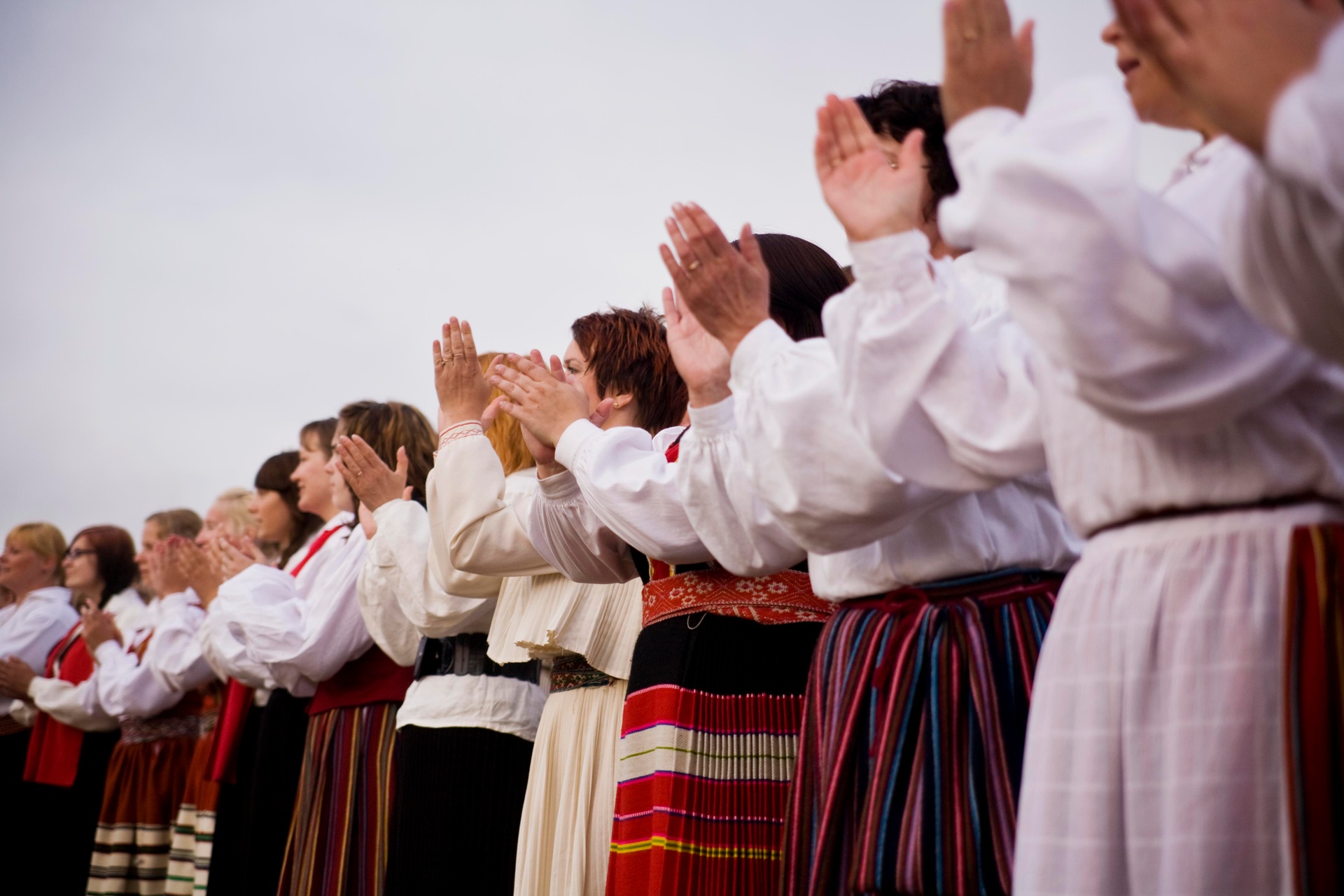
Get inspired
Last updated
04.12.2025
